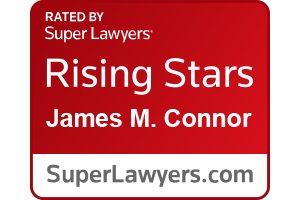Get Back on Their Feet
Social Security: How Your Age Affects Your Claim in New York City
SSDI Approval Rate by Age
It is very important for people to know how your age effects your claim, especially if you live in New York. The Social Security Administration has set up benefit programs to help people who are disabled, including the elderly. If you are age 55 or older and have become disabled, your chance of being awarded Social Security disability benefits is higher than someone below age 55. It is much easier for older people to qualify for Social Security disability benefits. An experienced Social Security Attorney In New York City can evaluate your chances of success and most, including us.
What are the “Grids”?
The main purpose of the grids is that once someone reaches age 50 or age 55, they are less likely to be trained for a different career that requires different job skills. For example, if a 50 year old disabled steel worker has no other work history and proves that they can no longer perform the physically demanding job of a steel worker, they will be found disabled if they are limited to a sedentary job. However, if a 50 year old has worked in a job that is less physically demanding, such as a secretary or a customer service representative at a call center, then they may not be able to found disabled unless they prove that they are incapable of working in a sedentary job.
It’s Easier for Older People to Qualify for Disability Benefits
It is much easier for older people to qualify for disability benefits because the SSA believes that it can be quite difficult for older disabled workers to transition to a new career. This transition is called a vocational adjustment, and the older you are, the more the SSA wants to minimize your vocational adjustment. For this purpose, the SSA has made it easier for older people to win disability benefits. For people at or over the age of 55, it’s easier to qualify, because the requirements for disability are at a lower level as they approach old age.
Your Disability Status Depends on Your Ability to Work
First, the SSA needs to determine if you are considered disabled by its standards. The SSA will investigate to discover if your impairment prevents you from substantial gainful activity (SGA.) This means the money you can earn working even with your disability. If you are capable of SGA even with your impairment, you will not be found to be disabled.
Severity and Duration of Impairment
The SSA also looks at the severity and duration of your impairment. To be considered severe, your impairment must greatly affect your daily life. Additionally, the severity of your condition must be expected to last a year or more. Older applicants are simply more likely to have a severe impairment. Your impairment will be analyzed to see if your condition meets or equals one of the SSA Blue Book’s impairment listings. These are the listings of all illnesses and conditions that would qualify a person to be considered disabled by the SSA and therefore qualify for benefit payments.
Present Ability Compared to Past Performance
The SSA also wants to know if your impairment prevents you from presently doing the work you were able to do within the last 15 years. Lastly, they want to know if your impairment prevents you from doing any other kind of work.
Guidelines Determining Your Work Ability
The “grid rules” are medical-vocational guidelines used to determine your ability to work, according to what level of exertion you’re capable of and other factors. The “grid” is a chart with different rules applying to different age brackets and different residual functioning capacity (RFC) levels. The grid rules favor those who are 50+, limited to sedentary work, and have limited transferable work skills.
If you are over the age of 50 and you have a disabling condition, but your condition doesn’t meet a medical listing for disability, grid rules would apply. The SSA would look at your age bracket and consider your education, skill level, and the transferability of your skills to another job. They would then use this information to determine whether you can be considered disabled by their standards.
Residual Functioning Capacity
RFC stands for residual functioning capacity. This is the level of physical exertion a person can work at despite limited ability due to impairment. Your RFC is based on how much weight you can lift. Based on the weight you’re able to lift (and how frequently,) you may be found to be capable of sedentary, light, medium, or heavy work levels. For each of these RFC work levels, there are different grid rules to apply.
Optimize your Chance of Success
To optimize your chance of a favorable outcome, it’s often helpful to hire an experienced New York City Social Security Lawyer to fight for you.










